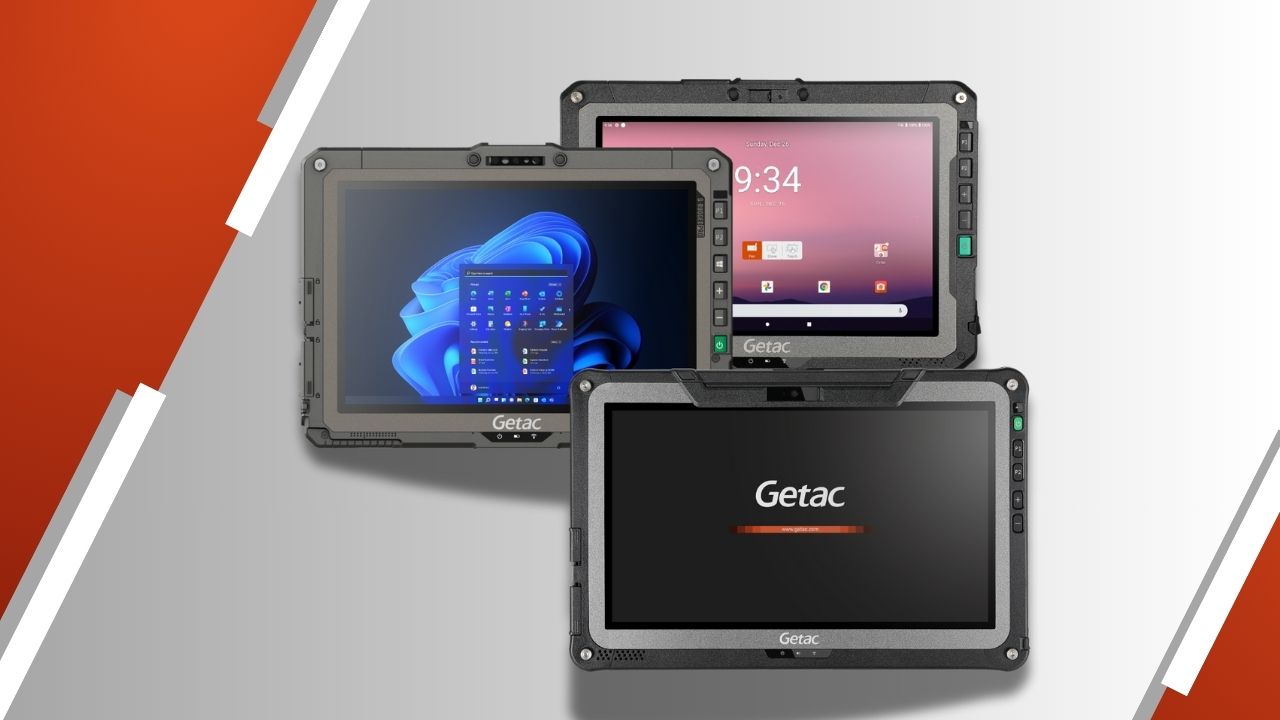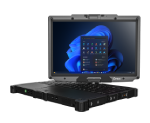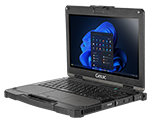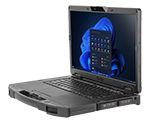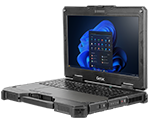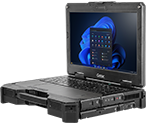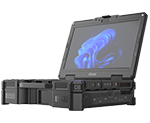Commercial vehicle fleets are a popular tool for doing business, from transportation and trucking to school busing to local package delivery. While some companies outsource entire fleets or their management, many others manage their fleets internally. In these organisations, the fleet manager is responsible for overseeing vehicle fleet operations, including driver safety, vehicle acquisition, and cost control. Fleet owners face significant challenges such as maintaining operational efficiency and dealing with rising costs. Maintaining vehicle oversight is critical to optimising vehicle “up” time, minimising costs, addressing rising costs, and monitoring fleet expenses as a critical area to control, along with other fleet management challenges.
Before uncovering current trends and challenges, it is worth defining vehicle fleet management in more detail to improve operational efficiency. Understanding market trends is essential for effective fleet management. Cost management also plays a crucial role in fleet operations.
What is Vehicle Fleet Management?
Simply put, vehicle fleet management oversees the vehicles that perform functions for a company. It is a growing market that Global Market Insights projects to reach $45 billion by 2027. Recording performance data such as those listed below create an opportunity for analysis, including metrics for electric vehicles, and fleet operations optimisation. It is essential to analyse data from various sources to identify issues, improve safety, reduce costs, and enhance overall efficiency:
Fuel usage economy and fuel consumption
Asset utilisation (or percentage of time in operation)
Fleet maintenance history
GPS
Route mapping
Vehicle health and prognostics
Driver behaviour
Insurance
Incident management
Route planning and optimisation
Fleet data for informed decision-making
Telematics systems for real-time vehicle tracking and driver behaviour monitoring
Driver management as a key aspect of fleet management
Vehicle acquisition as a strategic component of fleet management
Maintenance schedules as a critical factor for vehicle longevity and safety
Many fleet management systems use software like Connecteam, FMS, Air, Go Fleet, or Websleet. Each system has advantages; most can use the web, iOS, and Android platforms. In addition, these software packages are constantly adding functions to enhance the fleet management experience.
With Industry 4.0 charging ahead, With technology enhancement, vehicle performance is also evolving in vehicle fleet management. Here are 6 trends and 3 challenges of automotive fleet management in 2025.
Trends in Commercial Vehicle Fleet Management
1) Increased vehicle purchases
The COVID-19 pandemic caused automotive OEMs to trim production. This trend is exacerbated by the continued chip shortage hindering complete vehicle build rates. Still, companies play catch-up to close the production shortage gap as the world emerges and travels again. In this environment, strategic planning in vehicle acquisition becomes essential to ensure organisations can adapt to ongoing supply chain disruptions and maintain operational efficiency. In addition, increased production volumes of new, technology-packed vehicles provide fleet managers the advantage of managing maintenance costs by having a fleet with a high percentage of vehicles connected and capable of gathering and reacting to data, while smart planning helps manage new vehicle integration and supply chain challenges.
2) Enhanced cabin technology
With the rush of vehicle enhancements, the in-cabin environment receives as much attention as performance or emissions. As a result, vehicle engineers are upgrading the vehicle air purification system to protect driver health, seat heating and cooling, and passenger massage. These benefits improve the driving experience during a climate where drivers are in high demand (more on this in ‘challenges’). Offering competitive pay is also essential to attract and retain skilled drivers in this competitive market. In addition, maintaining a locally-optimised in-cabin temperature through the seat and massaging the driver during a trip can reduce tension and stress while improving circulation. As new technology is introduced in vehicles, it is important to train drivers to handle advanced features and ensure safety.
3) Increased electric vehicles adoption
A significant trend in fleet vehicle production this year is electrification. While not news in general, the coming years will usher a considerable percentage of battery electric passenger cars and commercial vehicles into fleets. This year may well be many drivers’ first experience driving an electric vehicle. These trends are crucial for building a sustainable future in fleet management, as they support environmental responsibility and long-term operational efficiency.
Another technology driving EV adoption is hydrogen fuel cells for commercial vehicles. Hydrogen is an alternative power source to batteries. It is an attractive option to power heavy trucks due to the advantages of its high mass-based energy density compared with the size, weight, and charge time of traditional EV batteries. Adopting such technologies can help fleet operators reduce fuel consumption and emissions, further supporting green practises in the industry.
Getac’s parent company, the Mitac-Synnex Group, has recently signed an MOU with U.S. company Hyzon Motors. The partnership is helping to bring hydrogen fuel cell trucks to Taiwan to support decarbonisation efforts. Transportation-as-a-service is elevating hydrogen to compete with battery electric trucks in Taiwan this year.
4) Increased vehicular autonomy
New fleet vehicles will incorporate more autonomous features including advanced driver assistance systems like adaptive cruise control, hands-free park assist, and driverless delivery. Adaptive cruise control helps vehicles maintain safe spacing with the surrounding cars on the road, contributing to enhanced safety by reducing the risk of collisions. This can be done by collecting and analyzing data to set the spacing.
Park assist allows the driver to place the car where needed. This removes human error from the process and accelerates the learning curve for new drivers. Finally, the rise of driverless delivery creates an opportunity for fleet management to monitor progress and optimise routing. Even as automation increases, monitoring driver performance—such as analysing driving habits and behaviors—remains important to further enhance safety and improve fleet efficiency. This helps shorten delivery times and optimise for last-mile deliveries.
5) Remote vehicle fleet management
5G networks can deliver vehicle data to IoT sensors closer to real-time with reduced lag and faster speeds. These networks improve communication quality with fleet management software, expedite optimised route change notifications, and enhance fuel efficiency by enabling more immediate predictive maintenance notifications. The widespread adoption of 5G technology in fleet management is expected to drive innovation, improve real-time data processing, and transform how fleets operate.
This trend is beneficial for remote fleets that may utilise slower networks. Additionally, more 5G coverage increases the likelihood of a remote fleet car smoothly communicating with the fleet management entity. With real-time data transmission, fleets can ensure timely deliveries and greater customer satisfaction. Furthermore, increased 5G coverage enables advanced analytics, empowering fleet managers to make better, data-driven decisions.
6) Increased safety emphasis
A common concern with fleet vehicles is driver safety. Drivers can log up to 25,000 miles each year, double that of conventional drivers and the approximate circumference of the Earth. It is not surprising that the commercial fleet incident rate is around 20%. This is due to long distances and a higher likelihood of distracted driving at some point during long trips. Establishing and regularly training staff on safety protocols is essential to prevent accidents, reduce risks, and improve overall fleet safety.
One corrective measure, dashcams, can assess driver behaviour and alert them of a risk. In addition, vehicle fleet management systems can enforce safe driving mode on the driver’s cell phone, preventing it from functioning correctly. Video evidence from dashcams can also help reduce insurance premiums for fleet operators.
For example, the Getac Driving Safety Utility provides reliable in-vehicle safety during dynamic operation. A third mechanism is a speed enforcer that can adapt to conditions. This type of tool can also aid in optimising fuel economy. Proactive maintenance and real-time diagnostics can help prevent unexpected breakdowns and reduce operational disruptions.
Current Challenges
The many positive trends of automotive fleet management that will help companies and drivers are not without challenges. Many fleet managers face similar issues and must adapt to changing conditions to stay competitive. Overcoming these challenges is critical for fleet success.
1) Supply chain disruptions
A remaining pandemic-driven challenge, supply chain disruptions, can knock any fleet management strategy off-centre. At least for now, just-in-time manufacturing may not be the best approach. Building in dual- (or more) supplier resiliency into the supply chain can mitigate disruption for fleet managers. In addition, technology-enhanced predictive maintenance can enable procurement teams to prioritise must-have components, saving lead time when ordering. These strategies help optimise operations and minimise downtime, ensuring fleets remain efficient and resilient.
2) Labour shortages
Commercial trucking is still woefully understaffed with drivers, a challenge that does not seem to have an end. Driver shortages remain a persistent issue in the industry, making it crucial for companies to address staffing gaps and improve driver satisfaction. However, fleet management companies can implement a mitigation strategy to add autonomous delivery through their fleet management systems. While it is a potential non-starter for heavy trucks, offloading smaller company deliveries to autonomous cars can repurpose the skilled drivers’ time for trucks. Automation can also streamline daily operations, improving efficiency and accuracy across the fleet. It can also unlock time untrained drivers can learn to operate heavy-duty vehicles.
3) Fuel cost volatility
The wild swings and spikes in fuel cost can break the economics of a fleet delivery. With unrest in Eastern Europe and BEVs finally making a dent in the global automotive market, it is difficult to project where rising fuel costs will be at a given time. This price volatility makes it challenging for fleet managers to accurately budget and control operational expenses.
To address the challenge of fuel and maintenance costs, automotive fleet managers can identify the lowest fuel price in the desired radius to direct the driver if they need to refuel the vehicle. Effective fuel management, including the use of technologies like GPS tracking and telematics, is essential for controlling costs and optimising fuel consumption.
Another course correction is capping the vehicle speed at an optimal level, around 55 mph. These strategies help reduce overall fuel and maintenance expenses by improving efficiency and minimising unnecessary wear on vehicles.
Trusted Technology for Vehicle Fleet Management
Rugged mobile devices are used throughout the fleet industry management value chain. This allows for high-performance computing capabilities in sometimes the harshest and remote locations. Artificial intelligence is increasingly being used to analyse fleet data, optimise operations, and improve decision-making in real time.
Rugged PCs in the form of handhelds, tablets, and notebooks are an enabler to the digital transformation of the fleet-based workforce. Typical applications can be found around Electronic Data Logging (ELD), Workforce Management, Route Optimisation, Access to Technical Information, Vehicle / Machine Health Check, Break Fix Diagnostics, and Collection / Delivery of Goods and Services. Technology also enhances fleet efficiency by streamlining processes and reducing operational bottlenecks.
When using mobile computing in vehicle fleet management, it is also essential to consider the vehicle docking that best fits the environment and transportation type. Technology can further help monitor and reduce maintenance expenses, supporting cost-effective fleet operations.
Takeaways
Technology and the IoT are enhancing the way the world operates. Vehicle fleet management will be no exception. As more BEVs and autonomous vehicles are deployed into fleets, access to vehicle data becomes more critical to the fleet and workforce managers. Much of this data, including critical vehicle maintenance metrics, will come directly from the vehicle itself. Leveraging this data, technology can also be used to optimise routes for greater efficiency, reducing travel time and improving overall fleet performance.
As digital transformation continues, there is still a multitude of tasks that the workforce will need to perform. Rugged devices will not only be the most cost-effective option throughout the life of ownership. The adoption of these technologies can also lead to significant cost savings by streamlining operations and reducing unnecessary expenses. They will also prevent avoidable disruptions and keep the workforce focused on the task.
By preventing disruptions, these strategies help control operational costs and improve profitability, ensuring a more sustainable and efficient fleet management approach.
Frequently Asked Questions (FAQs)
1. What does vehicle fleet management involve?
Vehicle fleet management includes overseeing all activities related to a company’s vehicles—such as acquisition, maintenance, telematics, driver management, route optimisation, and cost control. The goal is to maximise uptime, safety, and efficiency while reducing total ownership costs.
2. Why is vehicle fleet management important for businesses?
Effective fleet management reduces fuel consumption, maintenance expenses, and downtime. It improves driver safety, operational efficiency, and sustainability—especially as fleets adopt electric and autonomous vehicles.
3. What are the latest trends in fleet management for 2025?
Current trends include increased vehicle purchases after the pandemic shortage, growing EV adoption, use of hydrogen fuel cells, advanced in-cabin technologies, autonomous driving features, 5G-enabled remote management, and a stronger focus on safety.
4. What are the key challenges in managing a vehicle fleet?
The top challenges are supply chain disruptions, driver labour shortages, and fluctuating fuel prices. Managers also face increasing pressure to digitise operations, train drivers for new technologies, and meet sustainability goals.
5. How does telematics help fleet managers?
Telematics provides real-time vehicle data such as location, speed, fuel use, and driver behaviour. These insights help managers plan routes, schedule maintenance, and improve safety, resulting in better decision-making and cost control.
6. What technologies are transforming vehicle fleet management?
Key technologies include IoT sensors, AI analytics, rugged mobile computers, predictive maintenance systems, and 5G networks that enable real-time vehicle monitoring and data-driven decision-making.
7. How are electric and hydrogen-powered vehicles changing fleet operations?
EVs and hydrogen vehicles help reduce emissions and long-term fuel costs. They require new infrastructure, maintenance planning, and driver training, but support sustainability goals and can future-proof fleet investments.
8. What are rugged devices, and why are they used in fleet management?
Rugged devices are durable tablets, laptops, or handhelds designed for harsh environments. They support digital workflows such as ELD (Electronic Logging Devices), diagnostics, route planning, and asset management, helping fleets stay connected and efficient in the field.
Glossary of Key Fleet Management Terms
Asset Utilisation:
A metric that measures how often and efficiently fleet vehicles are in operation compared to total available time.
Autonomous Vehicle (AV):
A vehicle equipped with systems that enable it to drive or operate with minimal human intervention using AI and sensors.
BEV (Battery Electric Vehicle):
An electric vehicle powered entirely by rechargeable batteries with no internal combustion engine.
Connected Vehicle:
A vehicle equipped with internet access and communication systems that enable data exchange with other vehicles, infrastructure, and cloud systems.
Dashcam:
An onboard camera system that records driving activity to improve safety, monitor driver behavior, and provide video evidence for incident management.
Driver Behaviour Monitoring:
The practise of using telematics and sensors to analyse driver habits such as speed, braking, and idling to improve safety and fuel efficiency.
Fleet Telematics:
The integrated use of telecommunications and informatics to monitor vehicle location, movement, status, and driver behaviour in real time.
Fuel Management System:
A digital system that tracks fuel usage, refuelling patterns, and costs to optimise consumption and reduce waste.
Hydrogen Fuel Cell Vehicle (FCEV):
A vehicle powered by a chemical reaction between hydrogen and oxygen, producing electricity to drive an electric motor and emitting only water vapour.
IoT (Internet of Things):
A network of connected devices, such as vehicles and sensors, that collect and exchange data to enhance automation and analytics.
Predictive Maintenance:
A data-driven approach that anticipates vehicle maintenance needs before failures occur, using telematics and AI analytics.
Route Optimisation:
The process of determining the most efficient route for deliveries or trips based on real-time data, traffic, and constraints.
Rugged Device:
A durable computing device designed to operate in challenging environments such as construction sites, warehouses, or vehicles.
Supply Chain Disruption:
An interruption in the flow of materials or products, often caused by external events like pandemics, natural disasters, or geopolitical issues.
Telematics System:
A fleet management technology that collects and transmits vehicle data—such as GPS location, speed, and diagnostics—via wireless networks.
Total Cost of Ownership (TCO):
The cumulative cost of acquiring, operating, and maintaining fleet vehicles throughout their lifecycle.
Vehicle Health Monitoring:
Continuous assessment of a vehicle’s components and systems using sensors and analytics to detect issues early and reduce downtime.
Workforce Management:
Coordinating and optimising employee schedules, tasks, and performance, often through digital tools, to improve productivity in fleet operations.
